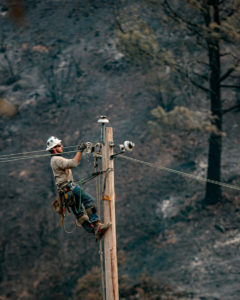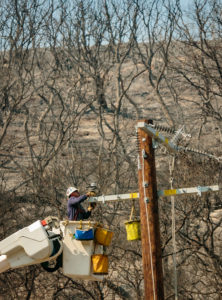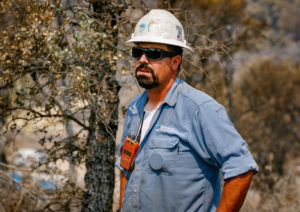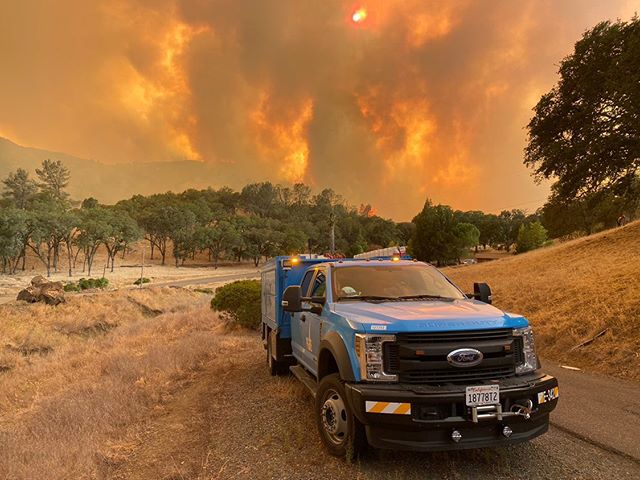In recent years, it’s seems like every new wildfire is “the worst in California history” – and indeed, seven of the top 10 biggest fires in California history have occurred within the last five years. But even in a state where destructive, fast-moving fires have become the norm, the massive lightning fire siege that swept across the state in August still caught many communities by surprise.
 According to CalFire, nearly 14,000 dry lightning strikes have resulted in more than 900 wildfires burning upwards of 1.5 million acres, an unprecedented scenario for California (or any other state, for that matter). As the fires spread, they began to merge into what CalFire has termed “complex fires.” As of this writing on Sept. 3 (nearly three weeks after the lightning storm), the SCU Lightning Complex Fire in and around Santa Clara and Alameda counties has burned close to 400,000 acres and is currently the second-largest fire in California history. The LNU Lightning Complex Fire, which has burned more than 375,000 acres around Napa Valley, is the third-largest fire in the state’s history. The CZU Lightning Complex Fire in San Mateo and Santa Cruz counties has burned close to 100,000 acres, but despite it being the smallest of the three, it’s proven to be the toughest to contain (based on available data from CalFire).
According to CalFire, nearly 14,000 dry lightning strikes have resulted in more than 900 wildfires burning upwards of 1.5 million acres, an unprecedented scenario for California (or any other state, for that matter). As the fires spread, they began to merge into what CalFire has termed “complex fires.” As of this writing on Sept. 3 (nearly three weeks after the lightning storm), the SCU Lightning Complex Fire in and around Santa Clara and Alameda counties has burned close to 400,000 acres and is currently the second-largest fire in California history. The LNU Lightning Complex Fire, which has burned more than 375,000 acres around Napa Valley, is the third-largest fire in the state’s history. The CZU Lightning Complex Fire in San Mateo and Santa Cruz counties has burned close to 100,000 acres, but despite it being the smallest of the three, it’s proven to be the toughest to contain (based on available data from CalFire).
As soon as the fires began, IBEW 1245 members were on the scene at all three of the complex fires — clearing downed lines from roads to allow firefighters to do their jobs; spraying utility poles with fire retardant to prevent them from catching fire; and working closely with other first responders on the scene to assist wherever needed. Once the fires were contained in a particular area, more crews were sent in to begin the restoration work, bringing power back to the neighborhoods that have been hardest hit by the flames.
The ground was smoldering, the air was thick with smoke, the heat was oppressive, and the terrain was rugged, but that’s never stopped IBEW 1245 members from doing their essential work before, and this event proved to be no different.

Ryan Rodriguez
“We’re trying to rebuild the structures out here and get these people their power, even though some of these properties are not standing here anymore,” PG&E Lineman and second-generation IBEW member Ryan Rodriguez told the Utility Reporter from the LNU fire zone near Lake Berryessa. “There are a few tucked back that are [still standing], and we’re just trying to get them ready for the future when they can come back, just trying to rebuild them up.”
Working in a fire zone is never predictable, and potential hazards are everywhere.
“In these burned areas you’ve got to be careful just walking around — because the ground looks okay but then you step in it and it’s a big hole, from stuff burning underneath the ground,” explained PG&E Lineman Don Lee, who works out of Clearlake. “There’s a lot of challenges up here … steep terrain and burnt poles that are still standing, but ready to fall down. You’ve got to really be careful around them and get them taken care of. We’ve been fighting every pole trying to get it out of the ground.”
Out in the SCU fire zone near Livermore, GC Line Subforeman Zach Taylor explained how the crews are coupling the restoration work with grid hardening work.

Zach Taylor
“We’re making it a little more safe and reliable as far as outages, and trying to mitigate every single fire hazard that we can. We’re taking extra precautions, building to newer standards, using better material and tools and hardware to increase the reliability of the system,” Taylor told the Utility Reporter. “We’re pretty much replacing every single pole, because they’re upping the class, screwing in new anchors, and then we’re pulling in the new tree wire. It takes a little bit more time, but in the end, I think you got a better product. It’s more reliable and it’s going to last a whole heck of a lot longer.”
Most of the 1245 members on these jobs are veterans of fire rebuilds, and despite the fact that the lightning fires are among the largest in state history, many of the members report that they’ve seen worse.
“With the Carr fire, which was more in town, there was a lot more mourning, more emotions in the air,” Rodriguez recalled. “Out here, we’re in the mountains and even though you see the devastation, there’s not a lot of people. We’re not seeing the public. So, I think it doesn’t hit as hard.”
“I think the hardest one we’ve been on was the Detwiler Fire, just because of the terrain, the heat, the amount of damage that occurred, and the size of the conductor that we pulled in,” said Taylor. “But this one, this one’s not bad. Don’t get me wrong — this job has its challenges, it’s not easy by any means, but it’s mild.”
–Rebecca Band, IBEW 1245 Communications Director
Photos by John Storey

A SIPT crew member sprays a pole with fire retardant in the CZU fire zone. Photo by Trevor Dirksen

A SIPT engine in the LNU fire zone. Photo by Roman Pinales

SCU Lightning Complex Fire Zone in Livermore, Calif.

SCU Lightning Complex Fire Zone in Livermore, Calif.

SCU Lightning Complex Fire Zone in Livermore, Calif.


SCU Lightning Complex Fire Zone in Livermore, Calif.

SCU Lightning Complex Fire Zone in Livermore, Calif.

SCU Lightning Complex Fire Zone in Livermore, Calif.

LNU Lightning Complex Fire Zone near Lake Berryessa

LNU Lightning Complex Fire Zone near Lake Berryessa

LNU Lightning Complex Fire Zone near Lake Berryessa

LNU Lightning Complex Fire Zone near Lake Berryessa

LNU Lightning Complex Fire Zone near Lake Berryessa

LNU Lightning Complex Fire Zone near Lake Berryessa

LNU Lightning Complex Fire Zone near Lake Berryessa